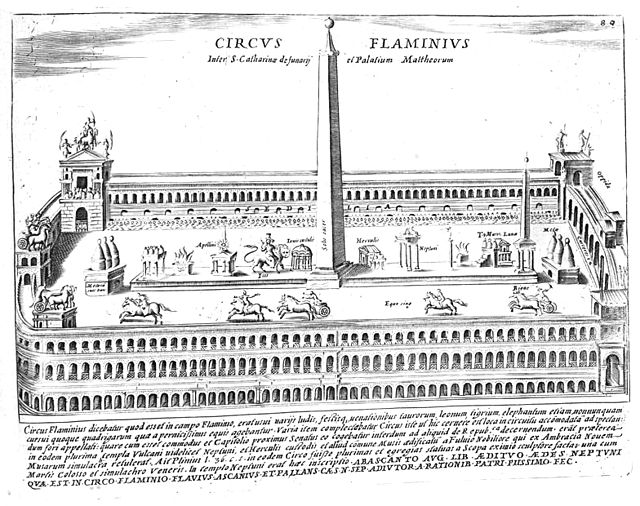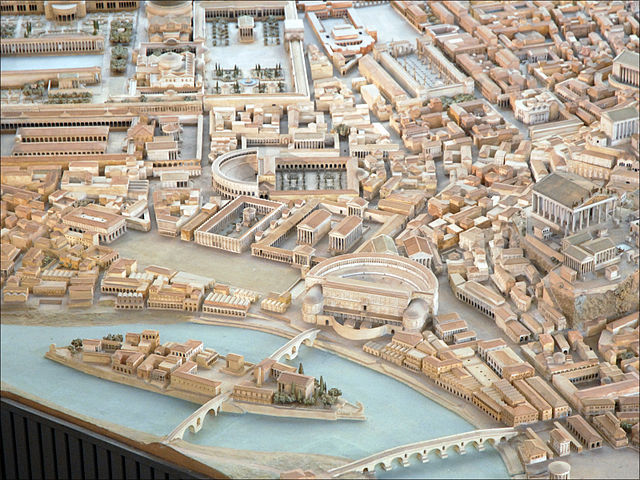Gaius Flaminius (consul 223 BC)
Gaius Flaminius was a leading Roman politician in the third century BC. Flaminius served as consul twice, in 223 and 217. He is notable for the Lex Flaminia, a land reform passed in 232, the construction of the Circus Flaminius in 221, the construction of the Via Flaminia, and his death at the hands of Hannibal's army at the Battle of Lake Trasimene in 217, during the Second Punic War. Flaminius is celebrated by ancient sources as being a skilled orator and a man possessed of great piety, strength, and determination. He is, however, simultaneously criticised by ancient writers such as Cicero and Livy for his popular policies and disregard of Roman traditions, particularly during the terms of his tribunate and second consulship.
Ducarius decapitates Flaminius at the Battle of Lake Trasimene, by Joseph-Noël Sylvestre. Béziers (Languedoc-Roussillon), Musée des beaux-Arts.
The Circus Flaminius was a large, circular area in ancient Rome, located in the southern end of the Campus Martius near the Tiber River. It contained a small race-track used for obscure games, and various other buildings and monuments. It was "built", or sectioned off, by Gaius Flaminius in 221 BC. After Augustus divided the city into 14 administrative regions, the Circus Flaminius gave its name to Regio IX, which encompassed the Circus and all of the Campus Martius west of the Via Lata.
Fanciful engraving of the Circus Flaminius by Giacomo Lauro in 1641
The plaza of the Circus Flaminius (left of the Theatre of Marcellus in the center), according to Italo Gismondi's model



